As an Amazon Associate Playpedalsteel.com earns from qualifying purchases. This page contains affiliate links.
Tuning a pedal steel can become a topic with depth and many factors. However, tuning is pretty straightforward if you just consider these factors:
- Decide whether you’d like to tune straight up to 440 Hz (Equal Temperament), or use a tempered tuning (Just Intonation).
- Tuner to use: think about quality, price, and the value it will provide.
- Think about where the tuner will be placed or mounted.
Tuning affects so much of your playing that using a professional tuner is usually worthwhile, and many of them are reasonably priced nowadays.
The accuracy and preciseness of the tuner is also important. If you are going to tune straight up, and want a stompbox tuner, then I recommend using TC Electronic’s PolyTune 3 Mini (link to Amazon).
For temper tuning, it can be beneficial to use a tuner that offers sweetened tuning presets.
Peterson offers this with some of their tuners, such as the StroboStomp HD Pedal Tuner (available on Amazon).
Many pedal steel players use Peterson’s tuners because of these sweetened presets, and their tuners are often a great value for their preciseness and accuracy. They also offer a mounting bracket for attaching some tuners to the steel guitar’s legs.
Equal Temperament Tuning vs. Tempered Tuning
Discussing the differences between the tuning methods of Equal Temperament and Just Intonation, can quickly feel like rocket science.
This is not necessarily a bad thing, it’s just an in-depth topic that has a lot of opinions and history behind it. It is nice to have tuning options and know more about these methods.
Sometimes the Equal Temperament method is called tuning “straight up,” and often Just Intonation tuning styles are referred to as “tempered tunings.”
Buddy Emmons tuned both ways in his career, and tuned straight up for most of the latter half of his playing.
Tuning Your Pedal Steel Using Equal Temperament
You can get a good in-tune sound from your pedal steel if you tune the same way a guitar player does. This would be tuning in reference to A=440 Hz, for all of your strings, pedals, and knee levers.
I’ve tuned straight up for over 10 years and enjoy how it sounds with other instruments, which are also usually tuned to Equal Temperament at 440 hz. Plus, it is convenient and easy to tune this way.
If you do tune straight up, consider dropping your G# strings a few cents flat on the E9 neck.
This will help your major chords in the open positions (no pedals or levers engaged) sound a little more rounded and pleasing to the ear. By doing this, you’ll be slightly flattening your major thirds in the chord.

I simply estimate this visually with the tuner if it doesn’t show exact cents. I look at the tuner and get the note as close to in tune as possible, but where it is still showing that it’s flat.
Adjusting Your Ears To The Flattened Thirds
Your ear will get used to these slightly flattened major thirds over time, especially if you’re used to tempered tunings already.
Also, your ear and muscle memory will begin to naturally compensate for these when playing all over the neck. This will be true even with the pedals or knee levers depressed.
You’ll likely begin to intuitively use slight bar slanting for different inversions and relative chords to compensate for the major thirds.
Whether you use the bar to compensate for these or not, it can be beneficial to start trying to become aware of this possibility as you play and practice.

Tuners for Tuning Straight Up on Pedal Steel
Most tuners available are designed for Equal Temperament tuning, so there are plenty of tuner options if you are going to tune this way – for pedal steel I recommend using TC Electronic’s PolyTune 3 Mini (link to Amazon) when tuning straight up.
When choosing a tuner for Equal Temperament tuning, as with any tuner, think about the preciseness, durability, quality, display, and features of the tuner.
I always find it important and helpful to have a tuner where the display has great visibility. See if the tuner has an LED display, and consider how easy it will be to see at different viewing angles and playing environments.
Also, for any tuner in your signal chain, it is usually a good idea to get one that is a true bypass to help preserve your tone.
Sweetened Tuning
If you’re going to temper tune, which is essentially like tuning by ear, then finding a tuning chart already made by pedal steel players may be helpful.
Many of these charts have taken into account the pedal and lever changes, and how they affect the tuning of the instrument.
They also consider that sometimes the cabinet of the guitar naturally drops when the pedals are depressed.
Sweetened Presets
For temper tuning, I think it’s awesome that Peterson offers sweetened presets for tuning on pedal steel guitar.
Although I haven’t tried it (because I tune to 440 Hz), if you’re looking for a stompbox tuner for temper tuning, check out Peterson’s StroboStomp HD Pedal Tuner (link to Amazon).
It has sweetened tunings for steel guitar built in through presets, which can also be customized to your liking, and has 0.1 cent accuracy. Also, this tuner is a true bypass, and has a pure buffer mode if you run any long cables.
Placement of Tuner
You may want the tuner to sit on your pedalboard, or have one that clips onto the pedal steel’s legs or headstock. There are also other placement options like the ground, or mounting on other parts of the instrument.
When using a stompbox tuning pedal, take into account that you may want to place it on a pedalboard or stand next to your pedal steel.
Placing it on a pedalboard that is on a stand will make it easier to engage with your hands, instead of having to use your feet.
I keep mine on a raised pedalboard so that I can use it with my right hand, and so it’s easy to see visually.
The Benefits of Having a Clip-On Tuner
I’ve started using a clip-on tuner for many rehearsals, and even some gigs, due to the size and convenience of it. It’s nice to only have to load my pedal steel, amp, and seat.
Although I haven’t used this particular one, a great clip-on tuner for pedal steel is Peterson’s StroboClip HD Clip-On Strobe Tuner (link to Amazon). I don’t know of any other clip-on tuners that have sweetened presets for steel guitar, so this is awesome to have available for pedal steel if you temper tune.
Keeping a clip-on tuner in your steel seat, along with having a tuner pedal, can be beneficial for different playing situations.
I like having a tuner pedal on my pedal board that is a part of my signal chain, but having the option to quickly tune with a clip-on tuner for when my steel rig isn’t fully set up.
The convenience of having a quick, efficient setup like this can be great for rehearsals, practice sessions, or gigs where you want to spend a lot of time setting up. It can also be great for tuning your pedal steel when it’s off stage and not connected to your pedalboard, or when the steel is setup by itself regardless of where your gear is.
Also, like many guitar players do, you can use a clip-on tuner for when you are playing your pedal steel through your amp without a pedal board.
Size and Attachment
Clip-on tuners are so small you can just keep it in your steel seat, or pocket, to use as a backup whenever you’d like.
Clipping it on to the end of the headstock, or a pedal steel leg on the side of the headstock, usually works well for picking up a signal.
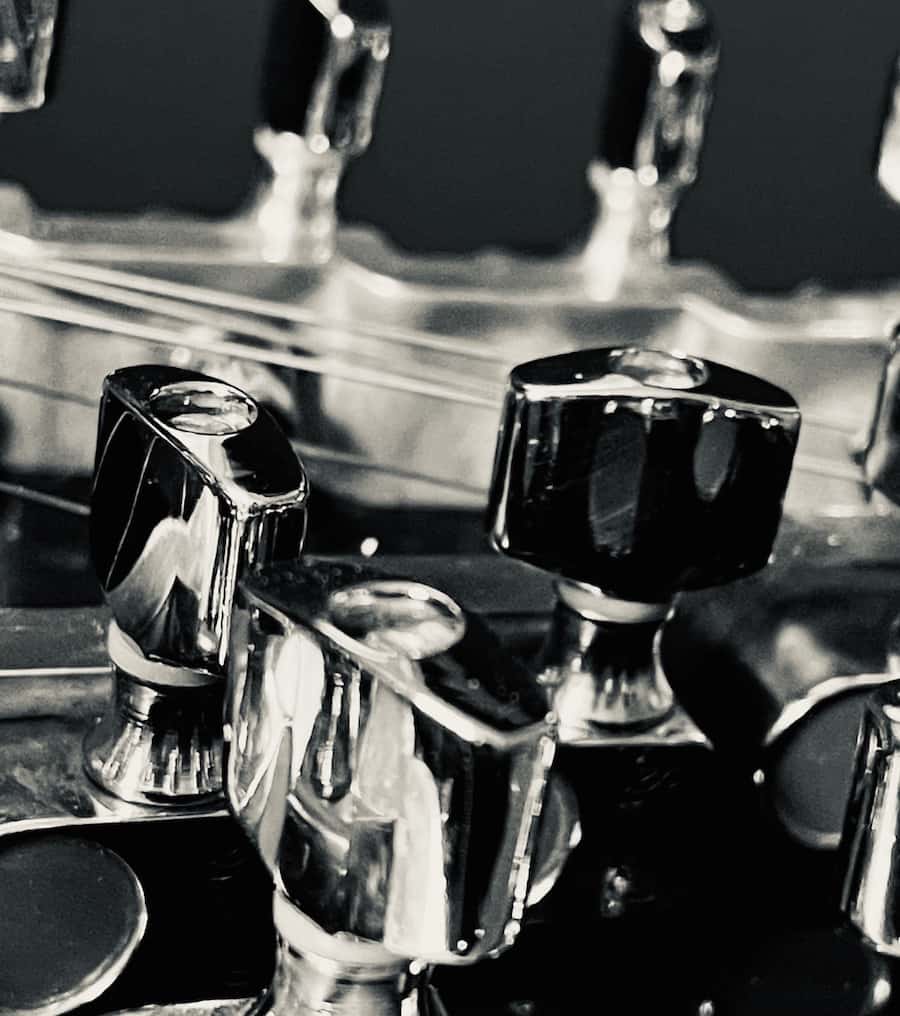
It won’t pick up the sound of other instruments in the room, so you can continue tuning in many playing situations.
Conclusion
There are many ways pedal steel players can customize and choose how to tune their pedal steel.
When playing pedal steel, or any instrument, often we want to collaborate harmoniously with the musicians and environment around us.
Tuning can have a big impact on this, and always using your ears is an important skill too.
However you decide to tune your pedal steel, use your intuition and ears, and enjoy the music!
Thanks for checking out this page, hope it is helpful and makes playing more enjoyable! If you’re interested in diving deeper into playing E9 pedal steel, check out these resources and guides…
The Chord Guide for E9 Pedal Steel (E-Book, Digital Download)
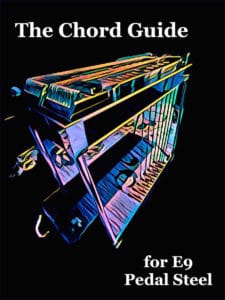
Learn the chords on the E9 neck in a way that makes playing simple and enjoyable…
- Almost Every Chord You’ll Ever Need for E9
- Intuitive and Easy to Use
- Make Use of Pedal and Lever Combinations
- Example Tabs of Chord Movements
- Easily Utilize the Nashville Number System
- Great For Any Key and Style of Music
Includes a bonus section of over a hundred pages of extra chord charts, key references, and more!
Playing Pedal Steel:
The Essentials
An easy and intuitive approach to mastering the pedal steel…
- An in-depth look at bar control, the right hand, using pedals, & the volume pedal
- Multi Angle Views – that you can always reference.
- Ways to Practice, How to Practice, What to Practice.
An online pedal steel lesson series – includes a free pedal steel EBook!
More Digital Downloads for Pedal Steel…
The Scale Book for E9 Pedal Steel
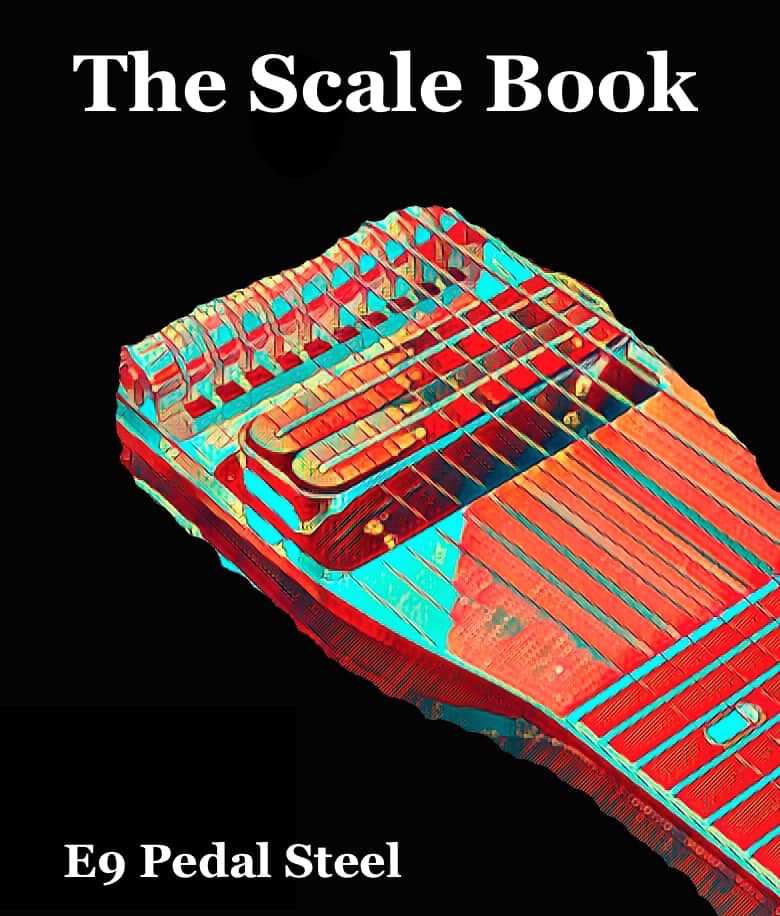
Over 1,000 Pages with Tabs and Diagrams!
- Easy to Use Reference for Practicing
- All Major and Minor Pentatonic Scales, Modes, Major Scales
- All Keys, and Covers the Fretboard
- Includes Pockets of Scales
The Art of Right Hand Technique
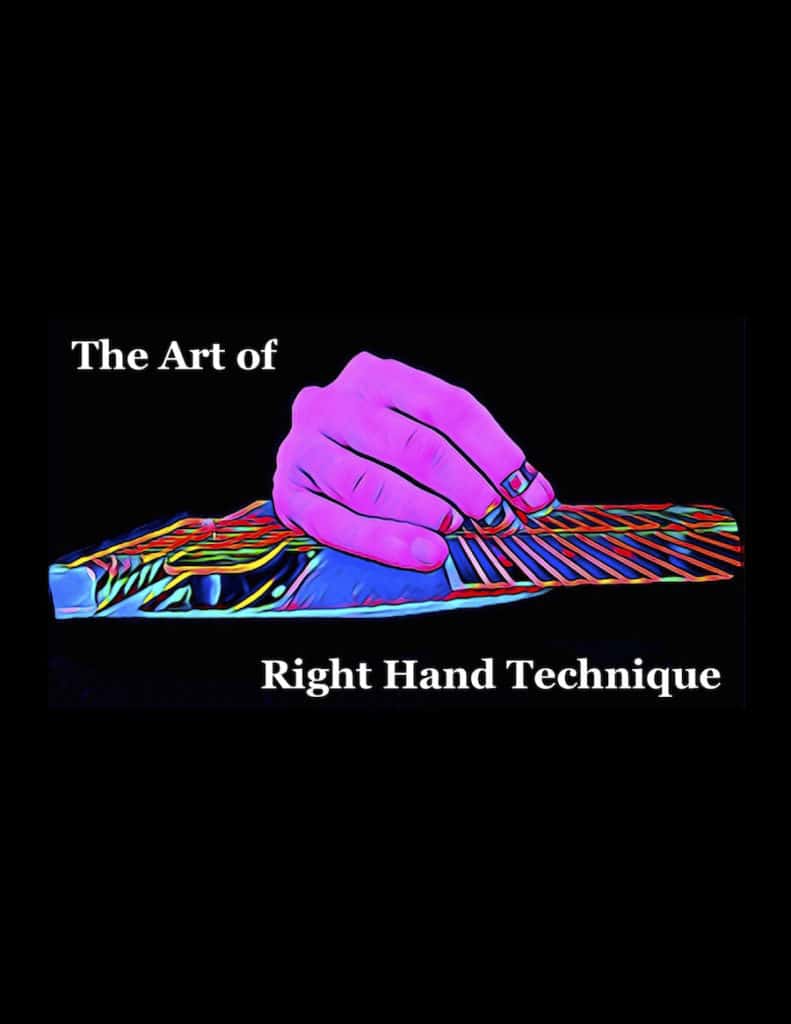
A detailed look at one of the most challenging and mysterious aspects of steel guitar playing: the right hand…
- An In-Depth Guide to Picking and Blocking
- How to Efficiently and Accurately Play Notes on Steel Guitar with Info, Advice, and Tips…
- Great for Pedal Steel, Lap Steel, and Console Steel Guitar
- Over 100 Pages with Graphics, Illustrations, & Practice Exercises
200 Country Riffs & Licks for E9 Pedal Steel
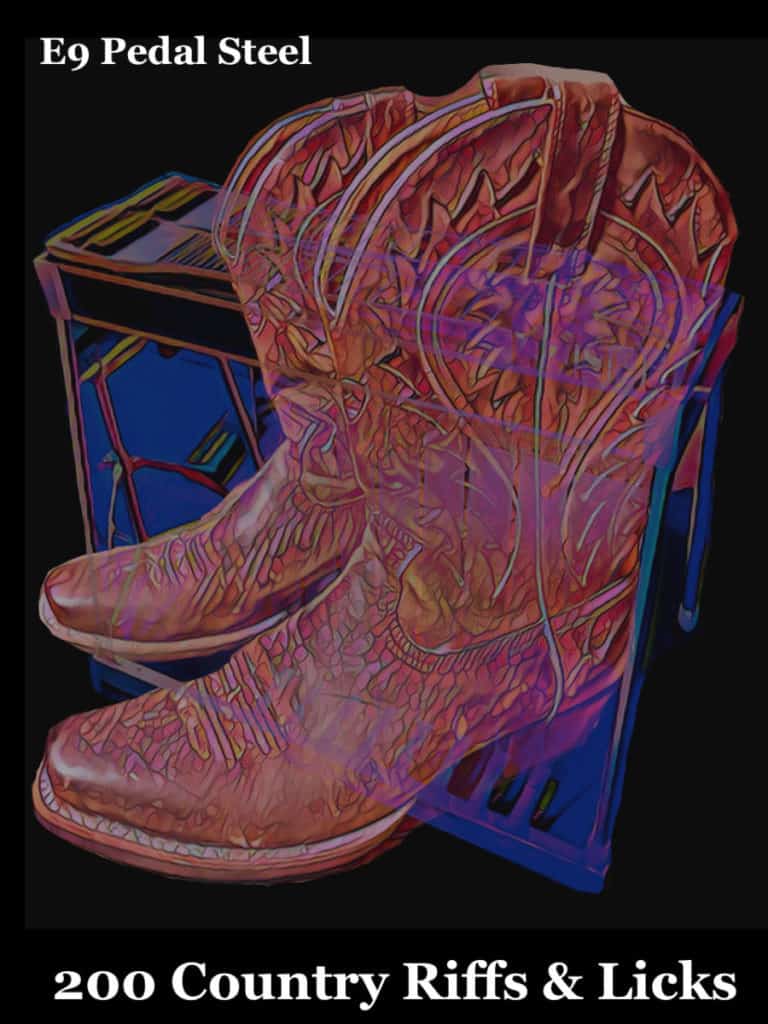
Add these country licks to your playing repertoire…
- Easy to Read Format
- Includes Rhythmic Notation
- Playing Over Chord Changes
- Great for Country, Alt-Country, & Honky-Tonk Styles
